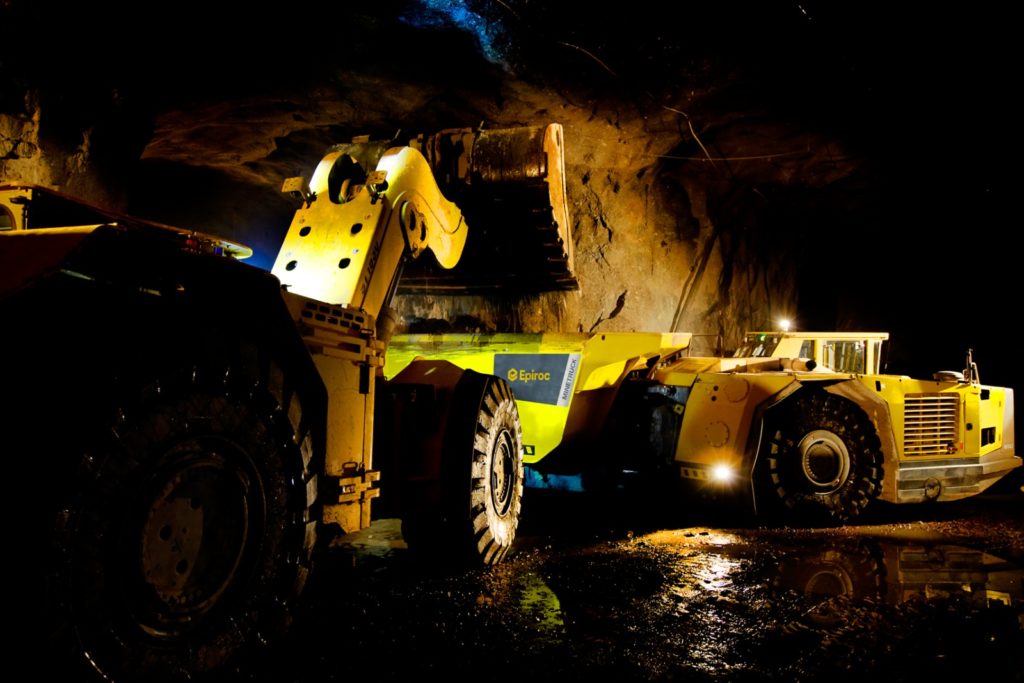Increased demands on safety, carbon emissions, energy efficiency and productivity are driving a technology shift in the mining business. One of the leading actors in this paradigm shift is NEXGEN SIMS, an EU-sponsored consortium of 13 partners – with Epiroc at the helm – that aims to demonstrate working autonomous processes in real mining environments within the next three years.
The EU-sponsored SIMS (Sustainable Intelligent Mining Systems) project, which aimed to demonstrate new technology and solutions for the mining industry, ran from 2017 to 2020. The SIMS project resulted, among other things, in the Epiroc line of battery-powered mining machines. Now, NEXGEN SIMS has picked up the torch. As before, Epiroc has a leading role in the project.
NEXGEN SIMS is a consortium of 13 partners collaborating in an EU-sponsored project to develop autonomous carbon-neutral, sustainable mining solutions, building on the successful SIMS project, which ran from 2017 to 2020. The partners are: Epiroc Rock Drills, AFRY – ÅF Digital Solutions, Agnico Eagle Finland, Boliden Mineral, Ericsson, KGHM Cuprum, KGHM Polska Miedź, K+S Minerals and Agriculture, Luleå University of Technology (LTU), LTU Business, Mobilaris MCE, OZ Minerals and RWTH Aachen University. The project has a budget of €16 million and will run from May 2021 to April 2024. AFRY and OZ Minerals are the most recent additions.
“This time around, we are using technologies developed over the course of SIMS and building on them. We’re looking at the material handling process in particular – the sequence of operations to load, transport and dump ore. One of the major aims of NEXGEN SIMS is to demonstrate autonomous material handling in a real mining environment,” says Jan Gustafsson, Project Manager and Coordinator for NEXGEN SIMS at Epiroc.

Jan Gustafsson had a similar role in the first SIMS project. “SIMS was very successful and bore plenty of fruit, but it was also a painful journey. We set our sights extremely high and put in considerable effort to develop the battery-powered machines and other technologies. With NEXGEN SIMS, we’re narrowing the focus to part of the mining process – the part in which we believe autonomy will have the highest impact on safety, productivity, carbon emission and energy consumption. We will be testing how different solutions work together autonomously, for example drones and loaders.”
“For the most part, we already know each other well. We have clearly defined roles, and the collaboration is well developed. But we’re excited to welcome and integrate our new partners, not least OZ Minerals. They will add a broader international scope, extending the project beyond the EU,” says Jan Gustafsson.
By the end of the project in 2024, Jan Gustafsson hopes that NEXGEN SIMS will have demonstrated working solutions in proper mining environments. “We will have done pilot tests and demos of, for example, autonomous loading and autonomous transport with dumpers, using positioning solutions and 5G connectivity. The pilots for the autonomous solutions will be demonstrated at the Agnico Eagle Kittilä site in Finland. SIMS provided us with necessary pieces of technology, but NEXGEN SIMS will show how they can work together. The goal is to demonstrate solutions that are close to marketable.”
There are some hurdles to overcome, such as how to best set up the necessary charging infrastructure for the battery-powered technology when running in autonomous mode, how to handle mixed traffic scenarios, and how to keep things running in the difficult underground conditions. “Autonomous machinery will need autonomous charging solutions, so we are investigating future solutions for enabling autonomous charging,” says Jan Gustafsson.
Another part of the NEXGEN SIMS project will study future requirements of mine workers, for example what skills and levels of education will be necessary in future mining. “Luleå University of Technology will be looking at the ‘digital miner’ and also the best ways to attract talent to the business over the coming years. One of the main reasons we’re developing these solutions is so that we can remove people from hazardous environments. The miner of the future will have a different skill set compared to the workers of today,” says Jan Gustafsson.











